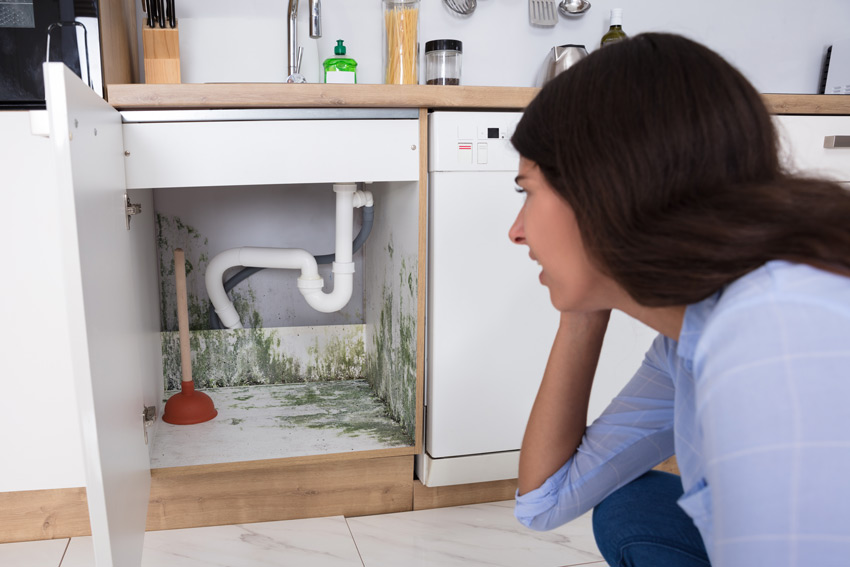Basic Facts About Mold in Your Home
Interesting Facts About Mold

What is Mold?
Mold is a type of fungus that exists in most environments. There are many different types of molds, each with its own color. Some are white, some are black, some are green, some are orange, and some are purple.
Is it Normal to Have Mold in My Home?
Mold is very common in buildings and houses. Mold grows best in moist environments, such as around leaky roofing materials, windows, or pipes; or where there has been water damage. Mold grows best on paper products, cardboards, ceilings, and wooden products. Mold can also grow on these surfaces.
Common indoor molds include Cladosporium, penicillium, and aspergillus. We don’t know exactly how often different types of mold are present in buildings and homes. However, we do know that some people are allergic to certain kinds of mold.
How Does Mold Get Inside and What Makes it Grow?
Mold is found both inside and outside. Mold can enter your house through open doors, windows, vents, heating and cooling units, etc. Outside mold can also attach itself to clothes, shoes, and animals can carry inside. If mold grows when water leaks into places where there is excess moisture, such as where there might be leaking from roofing materials, plumbing, walls, plants, or where there was flooding, then it will grow. Mold thrives on certain types of building material. Paper and paper product manufacturers, cardboard manufacturers, tile manufacturers, wood manufacturers, and wood product manufacturers are especially susceptible to mold contamination. These materials include things like dirt, paint, wallpaper, insulating material, drywall, carpets, fabrics, and upholstery which often support fungal (molds) and bacterial (bacteria) infections.
How Can You Tell if You Have a Mold Problem?
Once mold gets to the point where it can become problematic, you should be able to see it or smell it. That being said, it’s always good to get a mold inspection from an expert mold technician.
What Are the Side Affects of Being Exposed to Mold?
Exposure to wet and moldy environments may lead to various health effects, or no effect at all. Some people are allergic to mold. For these people, mold allergies can cause them to experience things like runny noses, coughing, and watery or itchy eye. People who are allergic to mold or have an allergy to dust mites may experience more severe reactions than others. Workers who are regularly subjected to high levels of molds in their workplace may experience severe allergic responses. Severe reactions may involve fever and shortness of breathe.
According to the Institute of Medicine, there is enough evidence to suggest that indoor exposure to mold may cause upper respiratory tract infections, coughing, and wheezing in otherwise healthy people; may cause breathing difficulties in people with existing lung conditions; and may trigger an allergic reaction in people who are prone to developing that type of allergy.
The World Health Organization (WHO) released new guidelines in 2009, the WHO Guidelines for indoor air quality: dampness and mold. Recent studies suggest a potential link between early mold exposure and development of childhood asthmatic symptoms, particularly among children who might be genetically at risk for developing these symptoms. And that certain interventions aimed at improving housing quality can reduce morbidities associated with these diseases.
There is no evidence linking exposure to indoor air pollution from molds to any adverse effect on human beings. Additional research is needed to determine why some people develop acute idiopathic bleeding and other adverse health effects from taking statins.
There is no way to tell if someone has been exposed to toxic levels of molds There are some physicians who can test for possible allergies to molds, but there are no clinically proven tests that can tell you exactly when or where a particular molds’exposures occurred.
Who is at Risk From Mold Exposure?
According to the CDC.gov website, Those who suffer from allergies might be more sensitive to mold than others. Those who have an impaired immune system or underlying lung disease are at greater risk for developing fungal infections. People who suffer from chronic respiratory diseases (such as COPD, Asthma, etc.) may experience difficulties when they breathe. Those who are immunocompromised are at an increased risk of developing fungal infections. If you or your loved ones have any of these symptoms, consult a qualified doctor for proper evaluation and treatment.
How Do I Remove Any Mold and Make Sure it Never Comes Back?
Once it is determined that you do indeed have mold in your home or business, have an expert Atlanta mold removal company such as Clymore Mold come and fully remove your mold.
After that, as part of routine home maintenance activities, inspect your home or business for evidence of moisture and visible signs of mildew. If necessary, correct conditions that cause mildew growth (such as leaking pipes, condensation, infiltration or flooding).
After that;
- Keep control of humidity levels
- Fix leaky roofs, windows or piping as soon you detect a faulty leak
- If your home or business ever floods, dry everything off immediately with towels and fans.
- Keep your showers, laundry area and cooking areas well ventilated.
Conclusion
Mold can not only be an inconvenience, but it can cost you thousands if not taken care of, and it could also cause serious illness. If you suspect that you are dealing with mold, be sure to get in touch with us for an on-site inspection.
Tell Us About Your Mold Problem
Assurance of Privacy:
Your privacy is important to us. Rest assured that the information you share in this form will be used solely for communication purposes related to your tree care inquiry. We do not share your personal information with any third parties.

